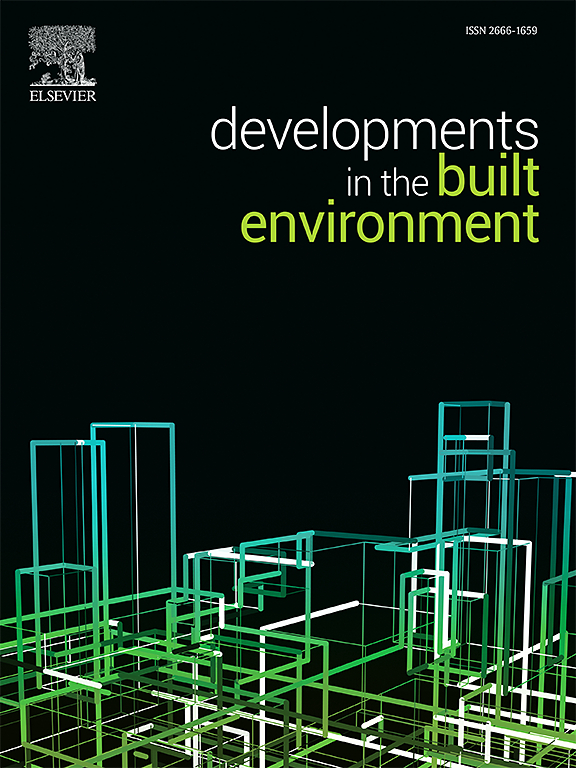下爆条件下大跨度双弯曲球壳屋盖风荷载分布的试验与数值分析:地形效应和径向位置敏感性
IF 8.2
2区 工程技术
Q1 CONSTRUCTION & BUILDING TECHNOLOGY
引用次数: 0
摘要
本研究通过设计比例模型,结合风洞试验和计算流体力学(CFD)数值模拟,系统研究了不同地形条件下下爆对大跨度双曲球形屋顶风荷载分布的影响。结果表明:当降爆岩心作用于模型正上方时,顶板上表面承受较大的垂直冲击载荷,平均风压系数(Cp)达到1.0,呈径向减小趋势,而顶板下表面的平均风压系数(Cp)略低(0.8 ~ 0.9),但分布均匀;在平坦地形条件下,随着径向距离的增加(≥1.25Djet),顶板上表面Cp衰减至稳定值(≈0.6),顶板下表面迎风面Cp线性减小,背风面变化最小,且在1.25Djet处出现局部高速区。斜坡地形条件下,上顶板表面Cp由正向负转变,且绝对值逐渐增大,下顶板迎风面Cp由正向负转变,最大负压区位于边缘。CFD速度等高线验证了地表压力分布,数值与实验数据高度吻合,为相关研究提供了可靠依据。本文章由计算机程序翻译,如有差异,请以英文原文为准。
Experimental and numerical analysis of wind load distribution on large-span double-curved spherical shell roofs under downburst conditions: Terrain effects and radial position sensitivity
This study systematically investigated the influence of downbursts on the wind load distribution of large-span hyperbolic spherical roofs under different terrain conditions through the design of scaled models, combined with wind tunnel experiments and Computational Fluid Dynamics (CFD) numerical simulations. The results indicate that when the downburst core acts directly above the model, the upper roof surface experiences significant vertical impact loads, with an average wind pressure coefficient (Cp) reaching 1.0 and exhibiting a radial decrease, while the lower roof surface shows a slightly lower Cp (0.8–0.9) but with a uniform distribution. Under flat terrain conditions, as the radial distance increases (≥1.25Djet), the Cp on the upper roof surface decays to a stable value (≈0.6), while the Cp on the windward side of the lower roof surface decreases linearly with minimal change on the leeward side, and a localized high-speed zone appears at 1.25Djet. In contrast, under sloped terrain conditions, the Cp on the upper roof surface turns negative with an increasing absolute value, while the Cp on the windward side of the lower roof surface transitions from positive to negative, with the maximum negative pressure zone located at the edge. The CFD velocity contour lines validated the surface pressure distribution, demonstrating a high degree of consistency between the numerical and experimental data, thereby providing a reliable basis for related research.
求助全文
通过发布文献求助,成功后即可免费获取论文全文。
去求助
来源期刊

Developments in the Built Environment
Multiple-
CiteScore
7.40
自引率
1.20%
发文量
31
审稿时长
22 days
期刊介绍:
Developments in the Built Environment (DIBE) is a recently established peer-reviewed gold open access journal, ensuring that all accepted articles are permanently and freely accessible. Focused on civil engineering and the built environment, DIBE publishes original papers and short communications. Encompassing topics such as construction materials and building sustainability, the journal adopts a holistic approach with the aim of benefiting the community.
 求助内容:
求助内容: 应助结果提醒方式:
应助结果提醒方式:


